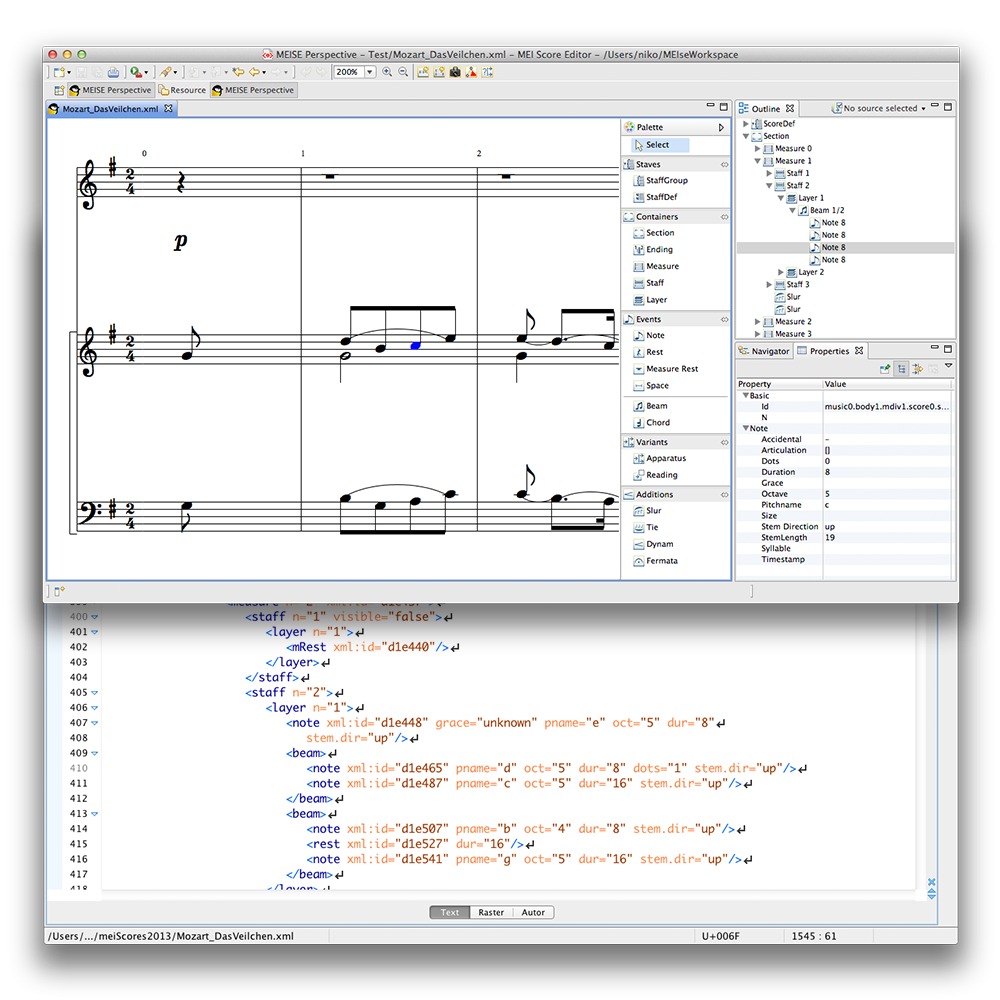Breadcrumb
- Services
- Tools and Services
- MEI Score Editor
- Use Case 3
Use Case 3
Use Case 3 – Building the MEI Sample Collection
Addressing the complex issues raised by the representation of music notation and its use in the Digital Humanities requires a broad range of knowledge and skills. The goal was to support such attempts by providing a sample collection of MEI files. The community behind the Music Encoding Initiative published the first official release of the schema in 2010. By then, almost no curated data utilizing the newly established framework was available. To support progress in the development of the data model and ensure its widespread approval, one of the main objectives of the project Digital Music Notation Data Model and Prototype Delivery System was the establishment of a collection with exemplary MEI files. Encoding these examples by hand would have been an infinity of work, so the plan was to convert existing MusicXML-files to MEI, to get a basis-set of samples with skeletal MEI-structures. In order to reflect common use cases adequately and to address complex issues raised by the representation of music notation approximately 1.000 MusicXML-files of free available samples of various genres were collected and they have been converted to MEI using an XSLT stylesheet. After reviewing the MEI files, a set of around 80 files was selected and enriched with high quality meta-data and images for each file. Remaining consistencies caused by the conversion were corrected and the files have been further enriched individually by hand. The final results should illustrate a broad range of musical genres and demonstrate the complexity and the capacities of the MEI format.
The process of proof reading has been greatly supported by the MEI Score Editor. The tool was used simultaneously with an XML-Editor, so the encoding and the display of the Musical Score could be simply compared and faults in the MEI could be corrected quickly. The tool facilitates reading MEI-files and comparing an MEI encoding with its appropriate image. MEISE supports recognizing inconsistencies and bugs more quickly and makes the reading more pleasant, compared to reading thousands of lines of XML code. Thanks to the use of MEISE, the process of reviewing the files could have been highly accelerated.


The sample collection is accessible on the MEI website. Further tools, such as the transformation stylesheets are saved in a google code project. The following image is a screenshot of the sample collection included on the MEI website.


The MEI Sample Collection will be steadily enhanced and improved with examples of a great variety and may be analyzed using MEISE.
